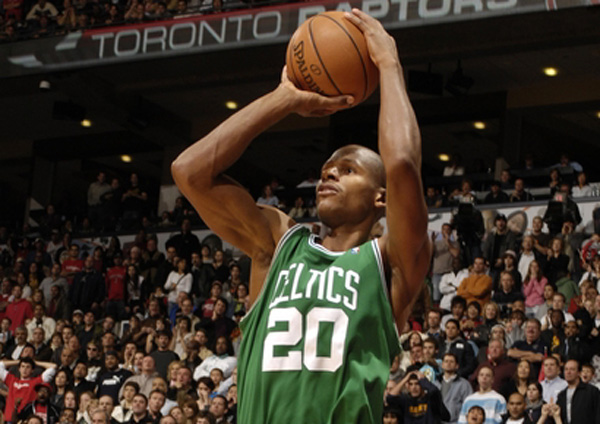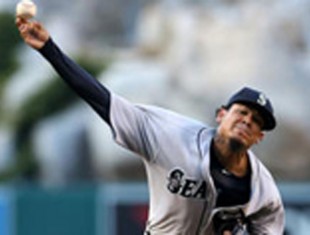Clay Moyle
I came across an interesting article on-line the other day from 2012 titled “The Line That Changed the Game.” It was written by Lee Feinswog of NCCA.com and focused on the way basketball has changed with the advent of the three-point line in 1987.
According to the writer, if you watch a college basketball game prior to that year you’ll see a lot of mid-range jumpers and all five of the players on offense are in motion.
Nowadays, you’ll see two, or even three offensive players standing around 20 feet away from the basket waiting for a kick out pass so they can launch a three-pointer.
It’s probably not much different in high school or recreational play. I know that just last night I played some ball at the local school with a number of other guys and there were numerous times when I found myself along with one or two others drifting around near the three-point line waiting for an opportunity to launch a bomb while the man with the ball tried to penetrate toward the hoop and one other guy posted up in the paint.
It’s also changed the way you play on defense as well. An individual may not be able to handle the ball, pass, or drive to the hoop very well, but if he can hit the three you have no choice but to stick with him and make sure you don’t leave him alone for any costly uncontested shots outside the arc.
Ray Allen
A player who can shoot from beyond the three-point line really opens the floor up for his teammates because they’re able to draw their defender further away from the basket.
Many people believe the mid-range jump shot is becoming a lost art and I guess that’s true. Certainly, its importance has been de-emphasized. In fact, as I understand it there is a local high school coach in my area that has gone so far as to mandate that his ballplayers shoot only three pointers or lay-ins.
It’s not untypical for a player to purposely dribble back a step or two in order to turn a wide-open two-point shot attempt into a three-pointer.
Former Vanderbilt University coach C.M. Newton was the chairman of the NCAA basketball rules committee in 1986 when the three-point line was instituted at a distance of 19-feet, 9-inches (It’s since been moved out slightly to its present distance of 20-feet, 9-inches in college). He felt the three-point shot would open the game up and make it much more entertaining for fans, and I believe most folks would agree, though the game has definitely changed.
In anticipation of the rule change in 1987, Newton specifically recruited ballplayers who could hit shots from that distance and told his team he didn’t want them shooting anymore 12 to 15-foot jump shots. From that point forward, his players were to shoot it only from three-point range or near the basket, and the team was one of the earliest to benefit from the use of the new offensive weapon.
Another coach in Feinswog’s article agreed with Newton’s thinking and expressed the viewpoint you don’t coach the 3-point shot, you recruit it. That coach felt that a kid could either shoot the 3-pointer well or they couldn’t. He also didn’t believe he’d ever turned a poor shooter into a good one.
Florida coach Billy Donovan agreed, saying that if a guy can’t shoot the ball it’s hard to make him a great shooter.
I guess I would agree with that, but only to a point. You might not be able to make a poor shooter a great shooter but I think if that individual is willing to take instruction and put in a lot of hard work it’s certainly possible to make them into a good shooter, if you’ve got enough time.
It’s highly unlikely you’ll turn a poor shooter into a good one over the course of a single season.
Former NBA guard Gary Payton is a guy who comes to mind as an example of a player who was able to become a decent shooter over the course of a few years. When he came out of college I was appalled at what a poor outside shooter he was. But, I believe he received some excellent instruction from a Seattle Sonics assistant coach named Tim Grgurich, and to his credit worked very hard on his shot and ultimately became a credible outside shooter. Payton hit a woeful 15.7 percent of his shots from behind the arc in his first three seasons as a Supersonic.
Although Payton never improved enough to be mistaken for Ray Allen or Stephen Curry, he did raise his percentage on three balls to 32.3 percent over the next 11 years in a Seattle uniform as a result of a lot of hard work.
I’m currently working with a couple of young girls and am trying to completely alter their shooting forms in the hope of turning them into better shooters. It remains to be seen what the results of those efforts will be, but I’m confident they will realize significant improvement if they follow the instruction and put in the necessary work on their own.
I know in my case I was able to improve from being a streaky inconsistent shooter who hit around 38-39 percent from the floor in high school to 50 percent in college by changing my own shooting mechanics and improving my shot selection.
I am definitely not a born shooter. Whatever capabilities I possess in that department have come about only as a result of a lot of time and effort. As a result, I’m convinced it’s possible for one to become a significantly better shooter if they’re willing to spend some time learning the proper mechanics and put in the necessary hours to master them.
Kids today are so fortunate because of all the resources they have at their fingertips on the Internet. All one has to do is jump on YouTube for example and a moment later they can be viewing videos of outstanding shooters like Stephen Curry, Ray Allen, Steve Nash and many others, and easily break down their mechanics and try and mirror those themselves.
Of course, the same is true in regard to other basketball skills such as passing, ball-handling and defense as well.
But, shooting a basketball well has always been the most important aspect of the game and never more so than since the introduction of the three-point shot.
The good news for those that aren’t currently proficient shooters is that there are so many more resources available to draw upon to learn how to properly shoot the ball. Now, more than ever before, I believe it’s possible to significantly improve in the skill if one is willing to invest the time and effort to do so.




